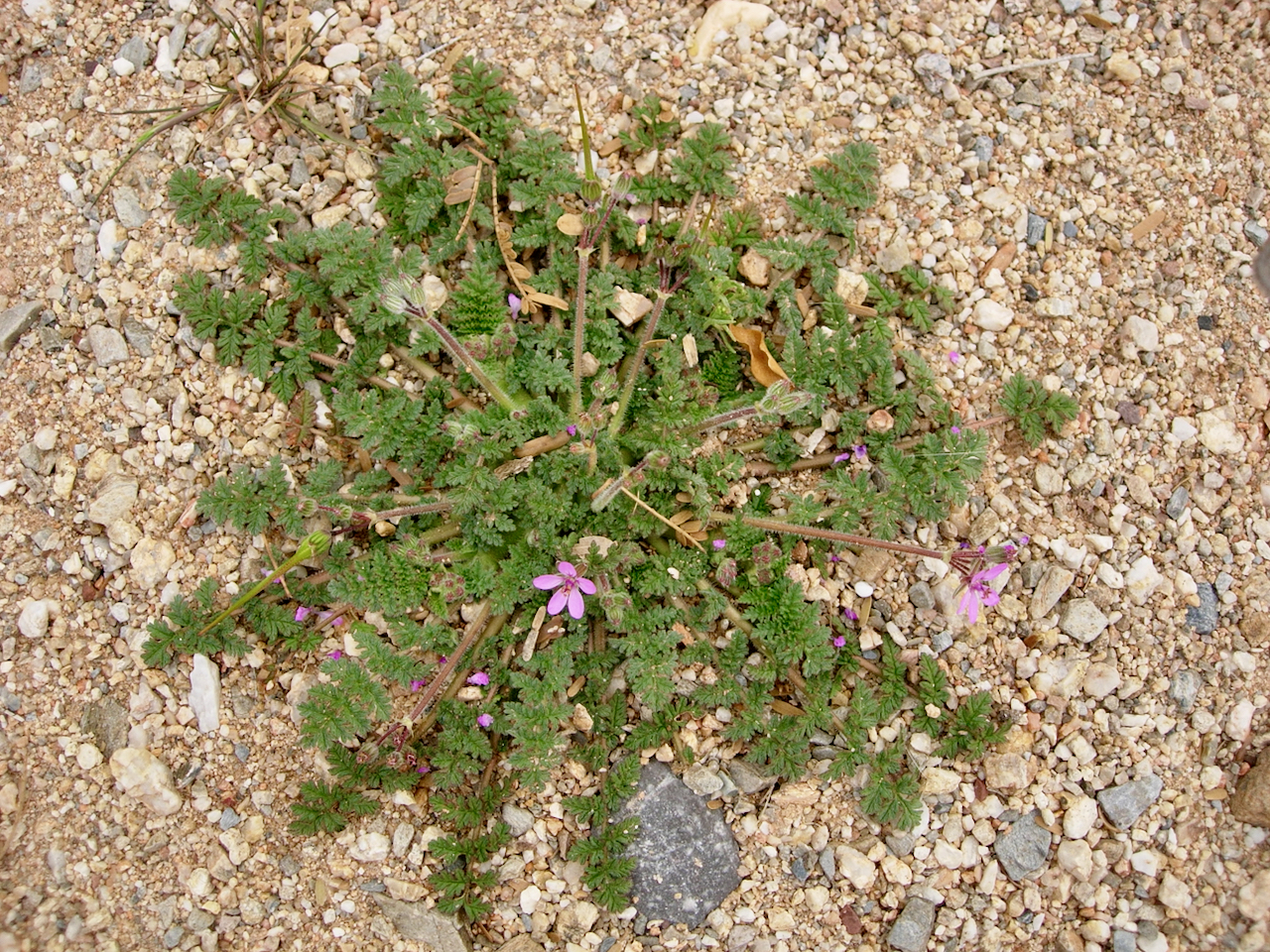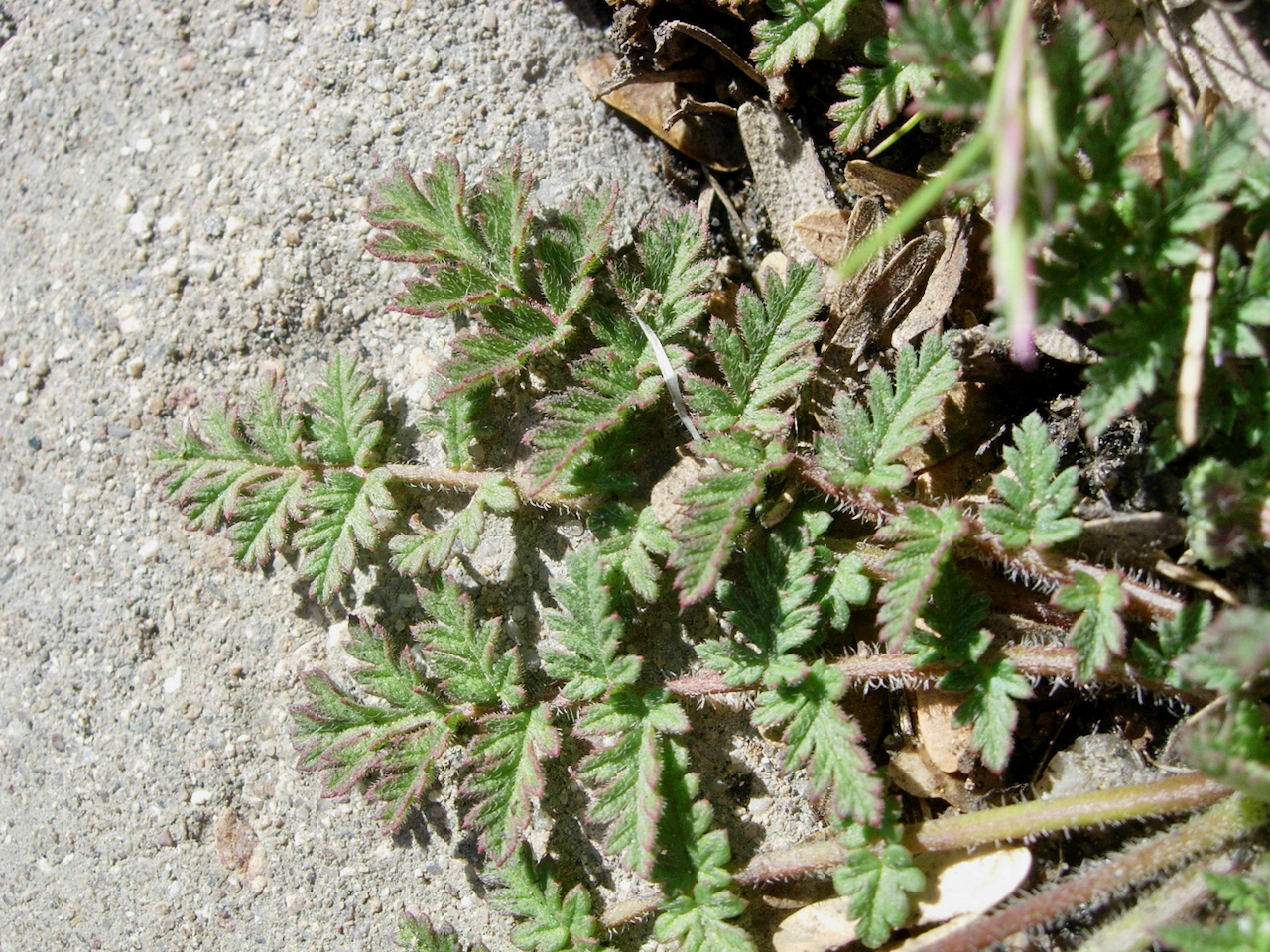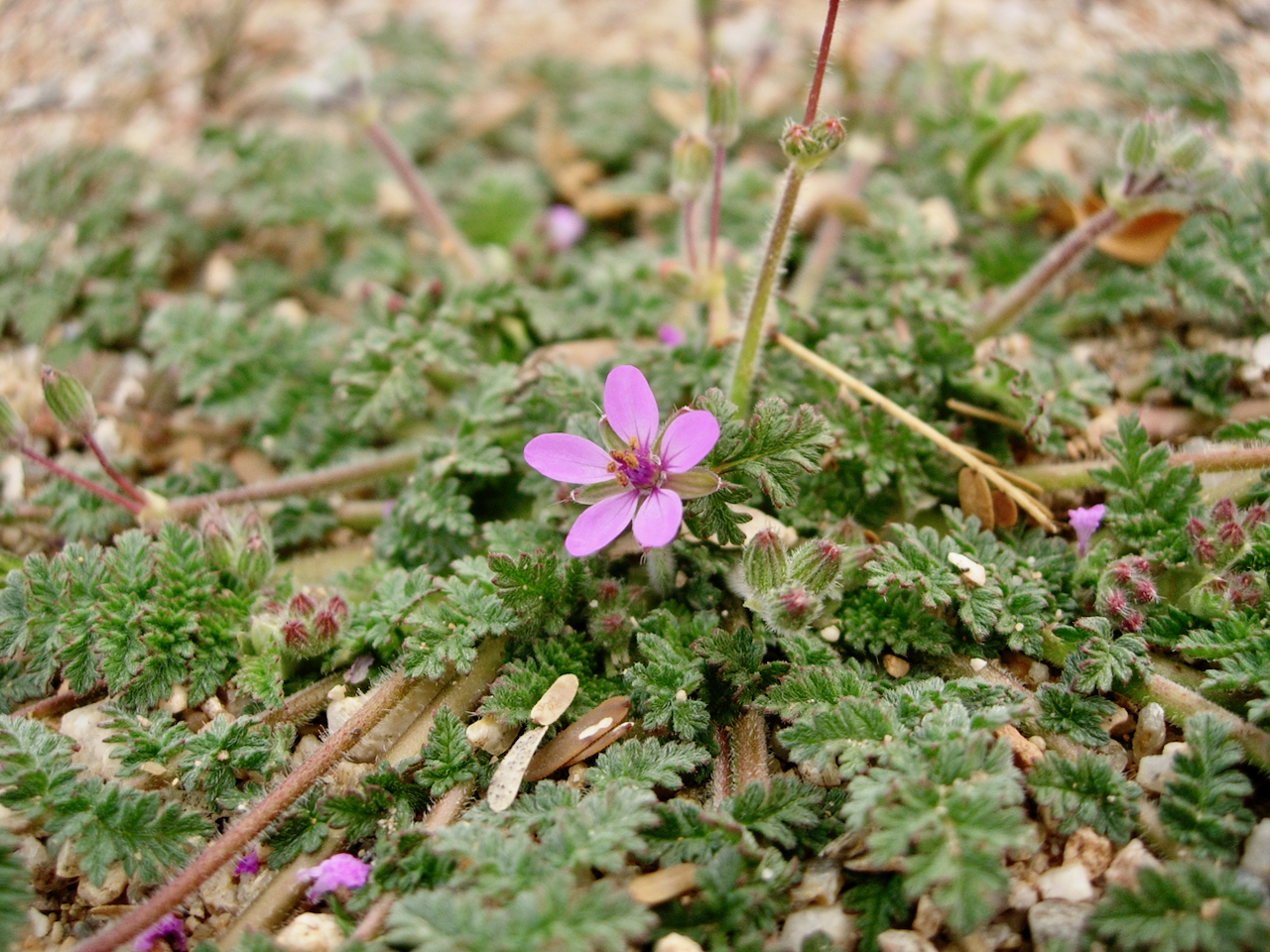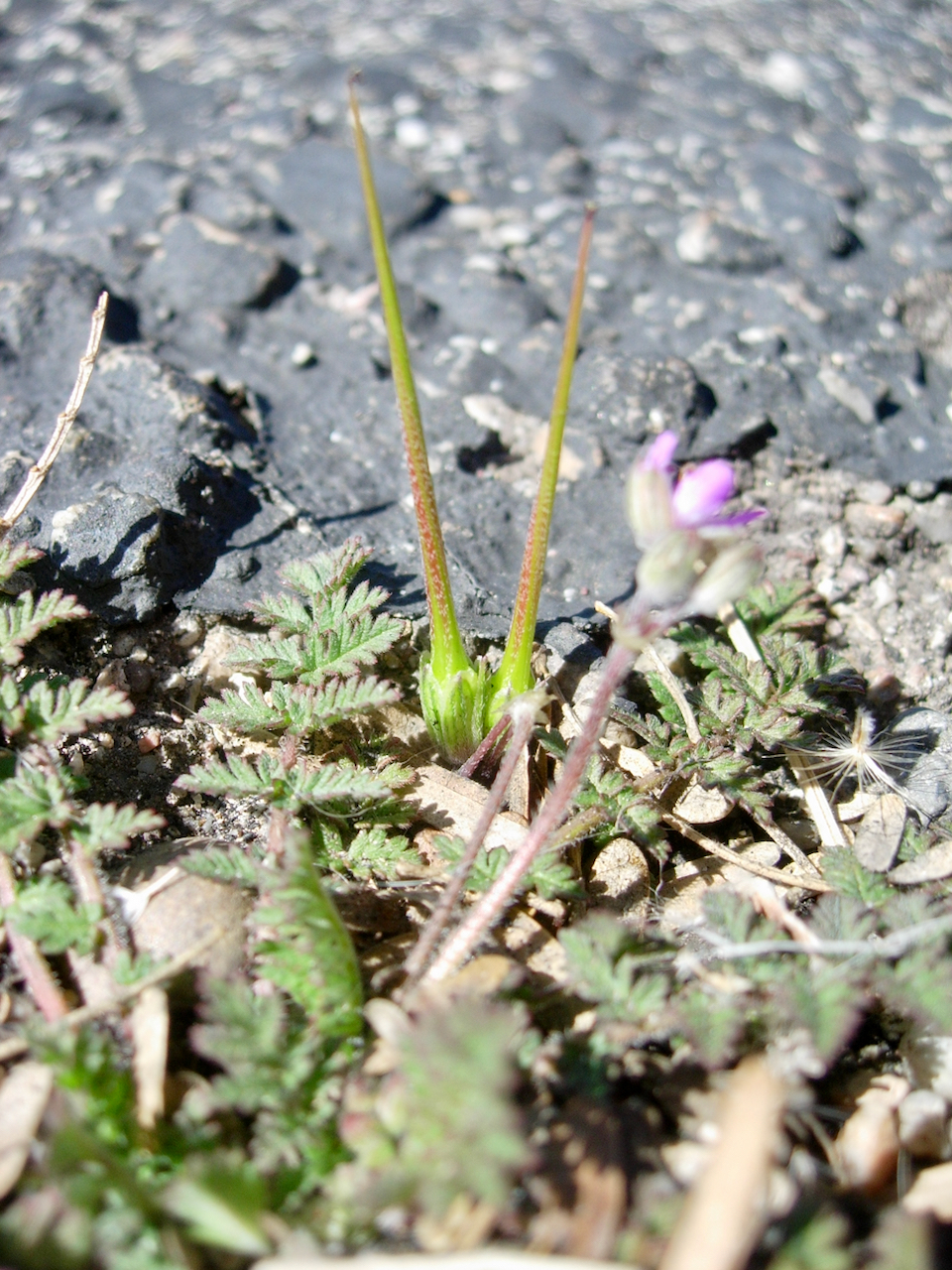Redstem Filaree
Erodium cicutarium
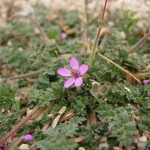
About the Plant
Redstem filaree is a winter annual native to the Mediterranean region. It was introduced into the US in the 1700s and can be found in most states. It can be a pest in agricultural fields, in lawns, and simply as a plant that pops up in disturbed areas. Redstem filaree germinates in cool weather, in Arizona in fall to live through the winter, or in early spring. It begins to grow and flower before our native spring wildflowers, as early as January, and, because of that, can out-compete them.
Redstem filaree can be controlled by pulling the plant before seeds are released. The seeds can live for many years in the soil and thus new plants can appear years after the mother plant flowered. If you have had redstem filaree in your yard, check for it each year and pull it when you find it.
More Information:
Weekly Plant on redstem filaree
Information from Utah State University
Blog from A Wandering Botanist
Map of distribution in US (pink=plant is considered noxious weed, blue=plant present and not native)
Technical botanical description from SEINet
ID Characteristics
This plant is in the Geraniaceae - the geranium family.
Redstem filaree grows as a rosette, its basal leaves low the ground. It can spread to 2 feet but in Tucson it is usually only 8-10 inches across. The flowers are held about 4 inches above the leaves. It is a hairy plant with red stems and red around the edges of the leaves. The foliage is eaten by some animals.
Each leaf is divided into leaflets, usually arranged opposite each other along the leaf stalk. Each leaflet has numerous lobes. If you click the photo to enlarge, you can see the hairs on the leaflets and the red edging.
The flowers are pink with 5 petals, about 0.5 inches wide.
The fruit is long and slender, looking to many like a crane, stork, or heron's long bill, about 1.5 inches long. This type of fruit is characteristic of all plants in the geranium family.
